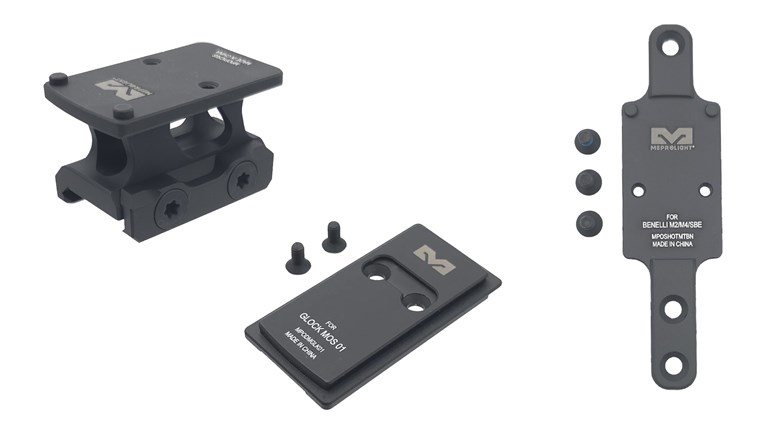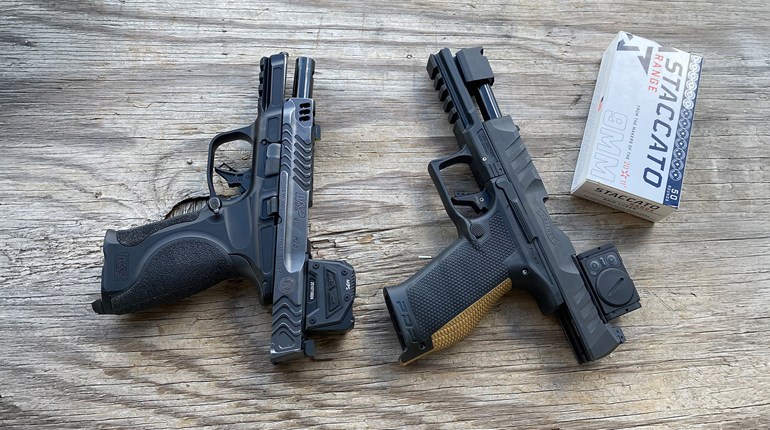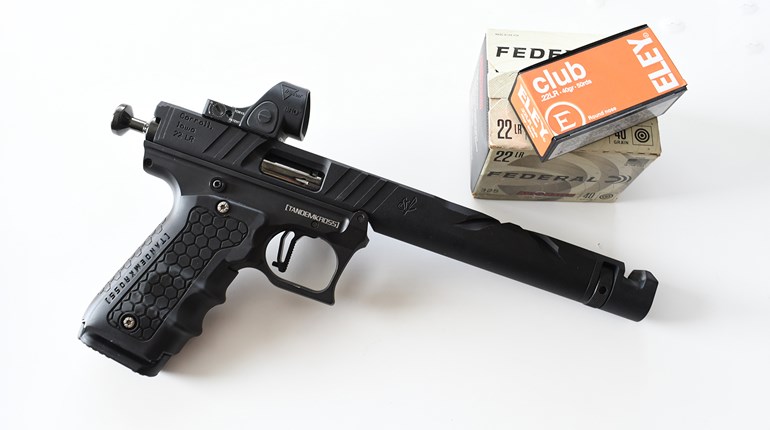
Over the last 20 years, red-dot sights (also known as reflex sights) have cemented their position as one of the go-to optics for both modern semi-automatic rifles and shotguns. And now more than ever, we’re seeing them atop handguns as well. Red dots have reached a level of ubiquity to where even the more affordable units work well enough for most shooters, as using these types of optics is quick, easy and intuitive. On most modern carbines that shoot intermediate cartridges, reflex sights provide shooters with the ability to shoot out to 300 meters without too much fuss. The wonderful thing about living in today’s world is the extent of technology that’s available to consumers at a reasonable cost. This certainly extends to firearms optics as a whole. With the rise of LPVOs, shooters with astigmatism don’t have to confine themselves to only red-dot sights. Although those LPVOs have become my favorite optic for a rifle, they are not the only alternative to red dot optic. Though not new, prismatic optics have also been available to shooters as alternatives to both red dot sights and riflescopes. So how do prismatic sights compare to red dot sights?
Red Dot Basics
All red-dot sights work off a very simple principle: an LED beam is projected and reflected off a specially coated lens and back to the shooter. The coating on the lens catches this light beam and reflects it back to the shooter’s eye while simultaneously allowing all other types of light to pass through. (This is why many red-dot sights have a tint of some sort). The shooter sees and uses the beam’s reflection as their aiming point. Projected reticles are mechanically adjusted to match a particular firearm’s zero. Because red-dot sights are not magnified and only involve a single visual plane, a shooter doesn’t need to be perfectly aligned directly behind the optic for a good sight picture. If they can see the dot and place it on their target, even from a less-than-ideal angle, the shot should still land there. This is one of the reasons this category of sights can be so quick to bring into action. As optics, these units have proven themselves and various ruggedized hard-use models are available. In my opinion, red-dot sights offer many benefits but have a few drawbacks. For one, there isn’t any magnification; for close range shooting this isn’t an issue. For farther shots, shooters certainly miss on precision and the ability to see their targets better. However, the single biggest drawback for red-dot optics is for shooters whose eyes have astigmatism. For them, red dots often appear blurry or starburst. Depending on the specific optic and its brightness and reticle size, they can also be harder to see properly. Again, what’s the point in pulling the trigger if one can’t see their target?
Enter The Prism
Fundamentally, prismatic optics work no differently than traditional riflescopes; they gather light and pass it through a series of lenses to magnify the image to the shooter’s pupil. However, their internal lenses are organized and arranged differently than scopes. Whereas a riflescope has lenses that sit in a stack like a roll of quarters, a prismatic optic has a series of three-dimensional glass prisms (often roof prisms) that reflect light from one another via their positions and angles. Due to their internal placement, prismatic optics have fixed magnifications, so their zoom power directly correlates to their overall length. This is why prismatic scopes aren’t practical past a certain level of magnification and why they’re only typically available between 1x to 6x magnification. In spite of these differences, prismatic optics operate identically to riflescopes in a practical sense. Shooters still need to consider eye-relief and eye-boxes, just like with any other scope. Depending on the prismatic sight, there may even be a diopter to adjust the exact prescription and optimize the image.
Arguably, the single most important aspect about any prismatic sight is the reticle. Like most scopes, prismatic optics’ reticles are etched directly onto the glass and are always visible. Depending on the model, these reticles can also be illuminated–like on traditional riflescopes. Because reticles are physically etched on glass and not projected from an emitter, shooters with astigmatism won’t be subject to the same visual challenges they get from red-dot sights. They also function without batteries as the reticle is permanently etched into the glass.
Red Dots Versus Prismatic Optics: Head To Head
My experience with red-dot optics includes larger units like the Aimpoint H2 mounted on my Beretta 1301, Aimpoint PROs and Trijicon MROs mounted on various carbines, and a whole slew of pistol mounted red-dot sights across a variety of pistols and revolvers. All of these generally work the same way and due to their nature, parallax or distance from my eye to the optics themselves isn’t a factor. I recently reviewed a WASR-10 AK rifle with a Gideon Optics Advocate prismatic sight, and the bulk of my prismatic optics experience stems from that. I am also leaning on my prior practical experience with traditional riflescopes and LPVOs, given some overlap. The two best ways of comparing non-magnified prismatic sights against red dot sights is by comparing speed and reticles. Comparing sizes, weights, shapes and mounting standards would be pointless as both types of optics tend to have similar characteristics (even those with some magnification).
Speed
When comparing red dots to non-magnified prismatic sights, the red dot is the faster of the two, no doubt because of its optical simplicity. (Most would also argue that they’re faster than LPVOs, for the same reason). Even when brought to eye-level quickly, the eye still has to process the light that is passing through the prisms back to the pupil. Practicing proper mounting position and eye-relief can make sight picture acquisition quicker. But all things being equal, the red dot is faster. In the same vein, optically, red dots use less glass than prismatic sights, so the issues of distortion, clarity and prescriptions are not as critical.

Reticles
Reticles on red-dot optics tend to be very straightforward, and oftentimes consist of a single aiming point, typically 2 MOA. Depending on the make and model, the emitter can also project a segmented ring, crosshair or other similar shape. The emitter also dictates the projection’s color. Because prismatic sights use etched reticles, these have a higher degree of freedom and aren’t limited by the emitter. Non-magnified prismatic sights tend to also have fairly simple reticles, oftentimes with a central aiming chevron that’s shrouded with a larger “donut” ring. The Gideon Advocate I referenced above uses a bold 12.5-MOA triangle optimized for CQB which works best inside of 100 yards. For prismatic sights that are magnified, their reticles may also include some stadia lines or holdover markings for ballistic compensation. For example, Trijicon’s classic ACOG models like the TA01 or TA31 feature built-in ballistic drop compensation for every 100 meters that ballistically matches US service rifles and service ammunition. Similarly, Primary Arms offers prismatic sights with varied markings and chevrons depending on the chambering used. Prismatic sights have the advantage here because they’re not limited by their emitter since they don’t use one. Like normal scopes, they also don’t need a batter and most importantly users with astigmatism don’t need to worry about blooming or starburst aiming points.
The Takeaway
As is the case with nearly every other aspect of shooting, fielding different guns or gear is always about trade-offs. Red dots are simpler and faster but leave the shooter with less sophisticated reticles and the risk of seeing a blurry dot that runs off a battery. Prismatic sights have an eye-box and eye-relief issues shooters must contend with, but their reticles are physically fixed in place and need no external battery source besides extra illumination for the reticle. Moreover, the manufacturer can take more liberties with reticle designs since prismatic sights don’t employ emitters. In the edge-case of a magnified prism against a red dot and magnifier combo, the prismatic sight is likely better in every way except that its zoom is fixed. Analyzing these trade-offs is always worthwhile, as mission drives gear.




































